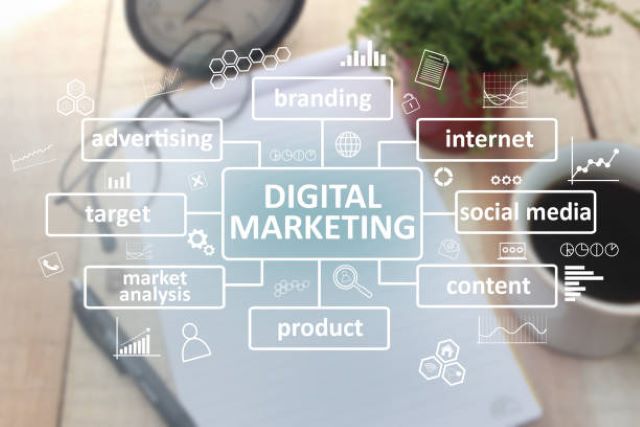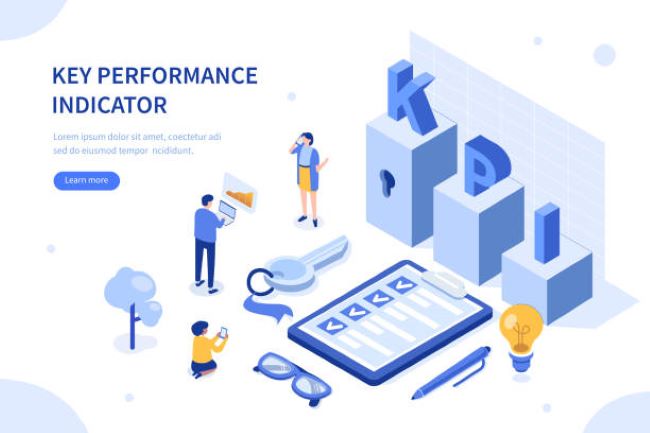Digital Advertising 101: A Beginner’s Guide

Are you interested in expanding your business’s reach through digital marketing and connecting with potential customers? Consider incorporating search advertising and display ads into your marketing strategy. Digital advertising, including online ads and display ads, is the key marketing strategy for success in today’s digital age. Search ads are an essential component of this strategy. With its wide reach and targeting capabilities, digital marketing offers a cost-effective way to promote your products or services online through digital ads. Implementing a strong digital advertising strategy and launching a well-executed digital ad campaign can greatly enhance your online presence.
Digital advertising encompasses various forms of online marketing, including search ads and display ads. It involves promoting products or services through creatives on digital platforms. Digital ads have revolutionized the marketing landscape, providing businesses with new opportunities to engage their target audience through display ads. This form of advertising has expanded the advertising inventory beyond traditional advertising methods. Unlike traditional advertising methods, digital marketing ads allow for precise targeting, ensuring that your message reaches the right people at the right time. With digital display and video ads, you can effectively promote your products or services to your target audience. Take advantage of these resources to maximize your marketing efforts.
In this blog post, we will discuss how to create compelling ad copy and optimize landing pages for maximum impact in the context of display ads, digital ads, marketing, and advertising inventory. Whether you’re just starting a business or looking to enhance your existing digital ad campaigns, this guide will provide valuable insights into harnessing the power of display ads, video, and search in digital advertising.
Benefits of Digital Advertising

Digital advertising offers several benefits for businesses, making it a powerful tool for companies. With the ability to display engaging video content, businesses can effectively capture the attention of their target audience. Additionally, digital advertising allows companies to reach a wider audience through search engines, increasing their visibility and potential customer base.
Targeted Audience
With digital advertising, businesses can use display and video ads to reach specific audiences through targeted search based on demographics, interests, and behavior. This targeted approach allows businesses to tailor their digital ad messages to the right people at the right time through video and display formats.
Measurable Results
Analytics and tracking tools provide businesses with measurable results for their digital ads, video, display, and search campaigns. By analyzing data such as click-through rates, conversions, and engagement metrics, businesses can optimize their strategies for better performance in digital ads, display, and search.
Flexibility in Budgeting and Duration
Compared to traditional advertising methods, digital advertising provides more flexibility in terms of budgeting, campaign duration, and display. It is a valuable tool for businesses looking to increase their visibility in online search results. Businesses can set their own budgets for digital ads, including display and search, and adjust them as needed. Businesses have the freedom to run digital ad campaigns for shorter or longer periods depending on their search goals.
Types of digital advertising

Search engine marketing (SEM)
- Placing ads on search engine result pages is a great way for businesses to increase visibility and drive traffic. By utilizing this strategy, businesses can effectively promote their products or services to a wider audience.
- Example: Google Ads, Bing Ads.
Display advertising
- Utilizes visual banners or interactive ads on websites and apps to create brand awareness for businesses in search.
- Example: Banner ads, pop-up ads.
Social media advertising
- Leveraging popular social platforms like Facebook, Instagram, and Twitter to engage with users and promote products or services through digital ads is essential for business growth and search visibility.
- Example: Sponsored posts, influencer collaborations.
In the world of digital advertising, businesses can utilize different types of search to effectively reach their target audience. Let’s explore some of these types briefly:
Search engine marketing (SEM) is a crucial strategy for businesses. It involves placing ads on search engine result pages to increase business visibility and drive traffic. This type of digital advertising allows businesses to target specific search keywords related to their products or services. For instance, using Google Ads or Bing Ads enables companies to bid on relevant keywords and display their advertisements when users search for those terms.
Display advertising is another effective method that utilizes visual banners or interactive ads on websites and apps to enhance search visibility. By strategically placing these ads in high-traffic areas online, businesses can increase their visibility in online search results and create brand awareness among potential customers who are actively searching for related products or services. Banner ads and pop-up ads are common examples of display advertising.
Social media advertising has gained significant popularity in recent years. It leverages popular social platforms like Facebook, Instagram, and Twitter to engage with users and promote products or services. Through sponsored posts or influencer collaborations, businesses can tap into the vast user bases of these platforms to reach their target audience effectively.
These are just a few examples of the different types of digital advertising available today. Each type offers unique advantages depending on the business goals and target audience. By utilizing a combination of these strategies, businesses can maximize their online presence and drive meaningful results in the ever-evolving digital landscape.
Successful case studies in digital advertising

- The “Share a Coke” campaign by Coca-Cola used personalized labels on bottles to encourage social sharing, resulting in increased sales and brand recognition.
Coca-Cola’s “Share a Coke” campaign stands as a prime example of successful digital advertising. By incorporating personalized labels on their bottles, the company tapped into the power of user experience. People were excited to find their names or those of loved ones on the bottles, prompting them to share photos and stories on social media platforms. This viral sharing led to a significant boost in sales for Coca-Cola while also increasing brand recognition.
- Airbnb’s “Live There” campaign focused on showcasing unique travel experiences through user-generated content, leading to higher engagement and bookings.
Airbnb’s “Live There” campaign revolutionized the way people viewed travel experiences. Instead of merely promoting accommodations, they highlighted the unique adventures users could have when staying at an Airbnb property. By leveraging user-generated content, such as stunning photos and captivating stories shared by travelers, Airbnb created an emotional connection with their audience. This approach resulted in higher engagement levels and an increase in bookings for the platform.
- Nike’s “Just Do It” campaign featuring inspiring stories of athletes resonated with consumers emotionally, boosting brand loyalty and sales.
Nike has always been known for its powerful marketing campaigns, and the “Just Do It” campaign is no exception. By showcasing inspiring stories of athletes overcoming challenges and pushing their limits, Nike tapped into consumers’ emotions. The campaign became more than just selling products; it became a symbol of determination and empowerment. As a result, Nike experienced increased brand loyalty among consumers who resonated with these narratives, ultimately leading to boosted sales.
These successful case studies demonstrate how digital advertising can yield remarkable results when executed effectively. Incorporating personalized elements like Coca-Cola did or focusing on unique experiences like Airbnb can significantly impact user perception and engagement levels. Evoking emotion and creating a connection with the audience, as Nike accomplished, can lead to long-lasting brand loyalty. By leveraging these strategies, businesses can achieve impressive outcomes in their digital advertising efforts.
Exploring display advertising strategies

Utilizing eye-catching visuals such as images or videos can capture users’ attention effectively. By incorporating visually appealing elements into your display ads, you can create a strong first impression and entice users to engage with your content. Eye-catching visuals not only help grab attention but also make your brand memorable in the minds of your target audience.
Implementing retargeting techniques can help reengage users who have previously shown interest in your products or website. By strategically placing cookies on users’ devices, you can track their online behavior and deliver targeted ads based on their past interactions. This personalized approach allows you to reconnect with potential customers who have already demonstrated an interest in what your brand has to offer.
A/B testing different ad designs or placements can provide insights into which strategies yield the best results. Experimenting with various creative elements, such as colors, fonts, and layouts, enables you to identify the most effective combination for capturing user attention and driving conversions. Testing different ad placements across various websites or platforms helps you determine where your target audience is most likely to engage with your ads.
Implementing these display advertising strategies can greatly enhance the effectiveness of your marketing efforts. By leveraging eye-catching visuals, retargeting techniques, and A/B testing practices, you can optimize your campaigns for maximum impact and reach a wider audience.
Harnessing the power of social media ads

Leveraging advanced targeting options offered by social media platforms allows businesses to reach their ideal audience. With social media advertising, companies can create ad campaigns that specifically target demographics, interests, and behaviors. By utilizing these targeting capabilities, businesses can maximize their ad spend and ensure that their message is seen by the right people.
Engaging with users through interactive content like polls, quizzes, or contests can increase brand awareness and user participation. Social media platforms provide various tools for creating interactive content that encourages users to engage with the brand. For example, a clothing retailer could run a poll on Instagram asking followers to vote for their favorite summer outfit. This not only boosts brand visibility but also creates a sense of community and involvement among followers.
Monitoring and responding to comments or messages promptly helps build trust and foster customer relationships. Social media platforms are known for their real-time nature, allowing businesses to interact with customers in a timely manner. Responding to inquiries or addressing concerns promptly shows that the company values its customers’ feedback and is committed to providing excellent service.
By harnessing the power of social media ads, businesses can tap into the vast user base of popular platforms such as Facebook, Twitter, and Instagram. These platforms offer extensive reach and allow companies to showcase their products or services directly to potential customers.
Video ads: a game-changer in digital advertising

Video ads have revolutionized the world of digital advertising, offering advertisers an effective way to convey messages and make a lasting impact on viewers. With various ad formats available on platforms like YouTube, advertisers can tailor their campaigns to meet specific goals.
One of the key advantages of video ads is their ability to captivate audiences through storytelling techniques. By incorporating narratives and emotions into their creatives, advertisers can forge stronger connections with viewers. This approach goes beyond traditional text ads by leveraging the power of visuals and sound.
YouTube, as one of the leading online channels for video content, provides a wide range of options for video ad placement. Advertisers can choose between skippable or non-skippable ads based on campaign objectives. Skippable ads allow users to skip after a few seconds, while non-skippable ads ensure that the message is delivered fully.
In addition to YouTube, video ads have expanded beyond online platforms and are now accessible through various media channels such as TV devices and game consoles. This wider reach allows advertisers to target different demographics effectively.
However, it’s important to address challenges like ad fraud and ad blockers that affect the effectiveness of video ads. Advertisers must stay vigilant in monitoring their campaigns for fraudulent activity and consider alternative strategies when faced with ad blockers.
Measuring success: Key metrics for digital advertising

Digital advertising success relies on various metrics that provide insights into the effectiveness and profitability of campaigns. By tracking these key metrics, advertisers can optimize their strategies and achieve better results. Let’s explore some essential metrics to consider:
Click-through rate (CTR)
CTR measures the percentage of users who clicked on an ad compared to the total impressions it received. A higher CTR indicates that the ad is engaging and compelling enough to attract user attention. To improve CTR, advertisers can focus on optimizing ad copy, using relevant keywords, and targeting specific audiences.
Conversion rate
Conversion rate indicates the percentage of users who completed a desired action after interacting with an ad, such as making a purchase or filling out a form. It reflects how effective an ad is in driving valuable actions from users. Advertisers should align their goals with conversion tracking to understand which ads are generating the most conversions and optimize accordingly.
Return on investment (ROI)
ROI calculates the profitability of an advertising campaign by comparing the cost of running ads to the revenue generated. It provides a clear picture of whether the campaign is delivering positive returns or not. Advertisers can monitor ROI to allocate budgets effectively, identify underperforming campaigns, and make data-driven decisions for future investments.
In digital advertising, these metrics play crucial roles in evaluating performance and guiding optimization efforts. By conducting keyword research, improving quality scores, setting measurable goals, and regularly analyzing these metrics, advertisers can maximize their chances of success.
Remember that each metric offers unique insights into different aspects of your campaign’s performance. By considering all these factors together, you can gain a comprehensive understanding of your digital advertising efforts and make informed decisions moving forward.
Now that we’ve explored these key metrics for measuring success in digital advertising let’s delve deeper into each one to uncover strategies for improvement.
The Future of Digital Advertising

We discussed the benefits of digital advertising, including its cost-effectiveness, targeting capabilities, and real-time data analysis. We also delved into various types of digital advertising, such as display ads, social media ads, and video ads, showcasing their effectiveness in reaching and engaging audiences. Furthermore, we examined successful case studies that demonstrated the power of digital advertising in driving business growth.
As technology continues to evolve at a rapid pace, so does the landscape of digital advertising. It has become an indispensable tool for businesses looking to reach their target audience effectively and efficiently. By harnessing the power of data-driven strategies and leveraging innovative ad formats across multiple platforms, businesses can stay ahead in this competitive digital era.
To make the most out of your digital advertising efforts, remember to continuously track and analyze key metrics that align with your campaign goals. Optimize your strategies based on these insights to maximize your return on investment. So why wait? Embrace the future of advertising by diving into the vast opportunities offered by digital platforms today!
FAQs
How can I determine which type of digital advertising is best for my business?
Choosing the right type of digital advertising depends on various factors such as your target audience demographics, campaign objectives, and budget constraints. Conduct thorough market research to understand where your audience spends their time online and what channels resonate with them most effectively. Experiment with different ad formats and platforms while closely monitoring performance metrics to identify which ones yield the best results for your business.
Is it necessary to hire a professional agency for managing my digital advertising campaigns?
While it’s possible to manage your own digital advertising campaigns, hiring a professional agency can provide several advantages. Agencies have expertise in creating effective ad creatives, optimizing campaigns based on data analysis, staying up-to-date with industry trends and platform algorithms changes, and managing budgets efficiently. They can also save you time and effort by handling the technical aspects of campaign setup and management, allowing you to focus on other core areas of your business.
How do I measure the success of my digital advertising campaigns?
Measuring the success of your digital advertising campaigns involves tracking key performance indicators (KPIs) that align with your campaign goals. Some common KPIs include click-through rates (CTR), conversion rates, cost per acquisition (CPA), return on ad spend (ROAS), and engagement metrics like video views or social media interactions. Set specific targets for these metrics before launching your campaigns, regularly monitor their performance, and make data-driven adjustments to optimize results.
What are some effective strategies for improving ROI in digital advertising?
To improve ROI in digital advertising, consider implementing strategies such as audience segmentation to target specific customer groups with tailored messages, A/B testing different ad variations to identify high-performing creatives, optimizing landing pages for better conversion rates, retargeting website visitors who have shown interest but haven’t converted yet, and continuously analyzing campaign data to identify areas for improvement. By constantly refining your approach based on data insights, you can enhance your ROI over time.






I do not even know how I ended up here, but I thought this post was great. I do not know who you are, but certainly you’re going to be a famous blogger if you are not already 😉 Cheers!
My brother suggested I might like this website. He was totally right. This post actually made my day. You can’t imagine just how much time I had spent for this information! Thanks!